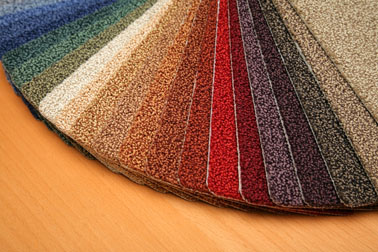
By TreeLiving
Carpeting that is soft underfoot and absorbs noise still has a place in contemporary home décor, in spite of a trend towards the green home, with wooden and laminate floors and easy to clean tiles. If you’re considering new carpets, or thinking about replacing old ones, there are a few things you need to know. The bottom line is that carpets can be hazardous t o your health, as well as the environment.
Back in the day all carpets were made from wool or cotton, with natural dyes, but most modern carpets have nothing organic about them. It’s now well documented that they may emit a whole spectrum of unstable, allergy-causing, toxic chemicals, including volatile organic compounds (VOCs) like acetone, benzene, ethyl acetate, formaldehyde and toluene.
Apart from causing neurological damage and respiratory problems in humans, some of these volatile and dangerous substances are also poisonous to animals and have been shown to cause cancers and birth defects. Infants, children and pets may be particularly at risk. Studies have shown that carpets may contain up to two hundred chemical nasties.
Carpets and chemicals go hand in hand. To start with, most are made of synthetic materials that are the product of intensive chemical processing. These are colored with chemical dyes, treated with water- and stain-proofing chemicals, fire-proofed with some more, and insect-proofed with naphthalene. Many carpets are backed with latex containing polybrominated diphenyl ethers, or PBDEs, that accumulate in organs and tissues. Last of all, volatile chemicals in carpet glues may contribute to the toxic mix.
Older carpets often aren’t much better, even if the original volatile chemicals have evaporated (which can take years). Some contain chemicals since banned. They are also traps for dust, allowing dust mites, which are a common allergen, to thrive. Old carpets may be heavily saturated with environmental chemicals, including pesticides and even heavy metals that are found in household dust and are brought in from outside on our shoes.
All these substances accumulate, meaning that pesticide exposure is in fact substantially more likely indoors than outdoors, according to the EPA. The thicker the pile or shag, the worse the contamination is likely to be – and regular vacuum cleaning may reduce the problem but it doesn’t eliminate it.
For people who aspire to having a green home, carpets made from natural materials and dyed with organic dyes are a solution if you don’t want wood or tiled floors. Rugs may be an even better solution, since they can often be thoroughly cleaned in the washing machine. Wool is partially fire resistant, while sustainable fibers for rugs, like hemp, jute, coir and sisal are attractive, hard-wearing and mildew resistant.
Don’t assume that because the material is natural it’s all fine – read the labels and try to source items that have been organically grown without the use of pesticides, and without undergoing excessive chemical treatments in the manufacturing process. Your floor coverings are a vital element in your green home, and canny consumers will find healthy and ecologically sound alternatives available.

